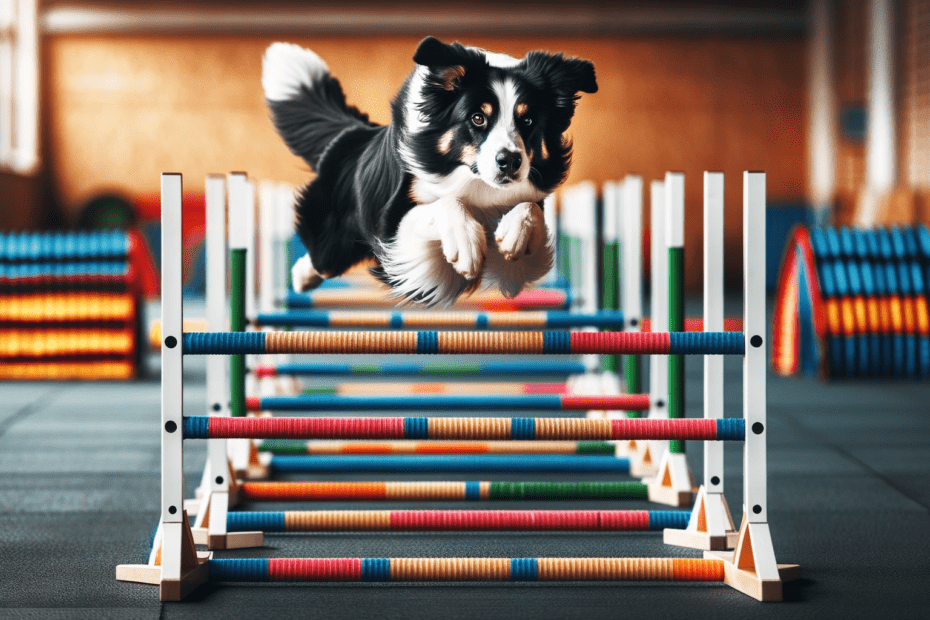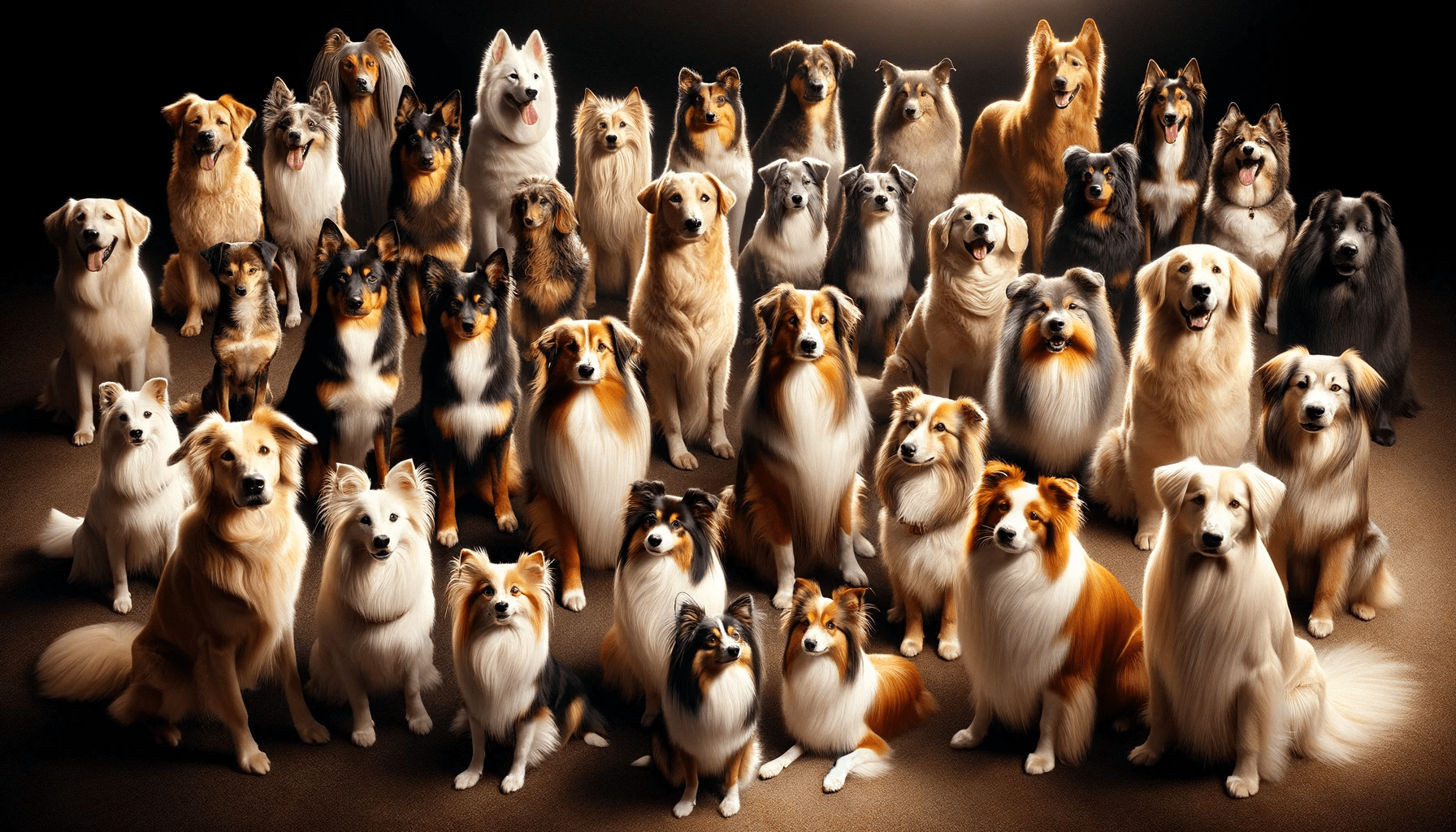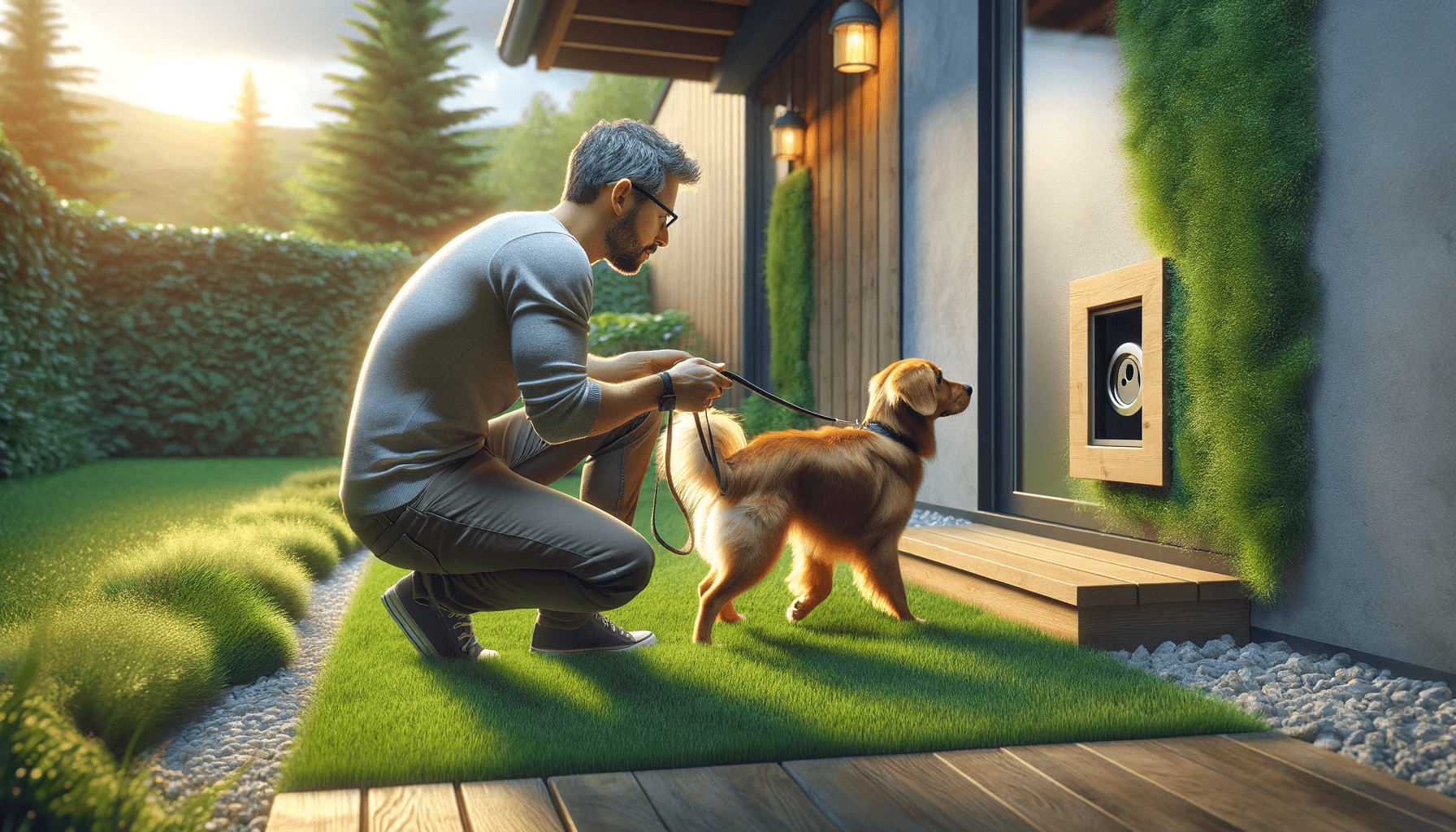Ready to take your dog's agility skills to the next level?
In this article, you'll discover the latest training techniques that will enhance your furry friend's agility.
From targeting specific obstacles to incorporating advanced handling techniques, these methods will help increase your dog's speed, accuracy, and overall control.
Additionally, advanced conditioning and fitness training will ensure they are in top shape for the course.
Get ready to unlock your dog's full potential and excel in the exciting world of dog agility.
Key Takeaways
- Obstacle training techniques should focus on obstacle recognition and precision targeting, starting with simple obstacles and gradually progressing to more complex ones.
- Advanced handling techniques involve higher levels of communication between the handler and dog, including the use of subtle body language cues, verbal commands, and hand signals. Mental preparation and visualization for agility competitions, as well as relaxation techniques for improved focus, are also important.
- Speed and accuracy techniques involve implementing strategic techniques to increase speed and accuracy, modifying agility equipment to challenge the dog, and incorporating exercises to improve concentration and decision-making.
- Distance and directional control techniques require advanced handling techniques for control over distance and direction, teaching the dog to focus on obstacles ahead, utilizing verbal cues and body language for directing attention, and reinforcing correct responses for improved understanding and response time.
- Conditioning and fitness training are crucial for enhancing strength, endurance, and overall performance in dog agility. Plyometric exercises, interval training, and strengthening muscles and joints can help prevent injuries and improve enjoyment of the sport.
Targeting Specific Obstacles
To improve your dog's agility skills, you should focus on targeting specific obstacles during training sessions. Obstacle recognition and precision targeting are key factors in enhancing your dog's agility performance. By teaching your dog to recognize and target specific obstacles, you can help them navigate courses with ease and accuracy.
Start by introducing your dog to different obstacles one at a time. Begin with simple ones like jumps or tunnels, gradually progressing to more complex challenges such as weave poles or A-frames. Use positive reinforcement techniques, like treats or praise, to encourage your dog to engage with each obstacle. As they become more comfortable, increase the difficulty level by adding distractions or varying the height and distance of the obstacles.
During training, focus on precision targeting. Teach your dog to approach obstacles head-on, ensuring they make direct and efficient movements. Use verbal cues and hand signals to guide your dog's attention and direct their path towards the targeted obstacle. This will help them develop better coordination, balance, and spatial awareness.
Incorporating Advanced Handling Techniques
Improve your dog's agility skills by incorporating advanced handling techniques. These techniques go beyond basic commands and require a higher level of communication between you and your dog. One important aspect of advanced handling is using advanced communication techniques. This involves using subtle body language cues, verbal commands, and hand signals to guide your dog through the course. By mastering these techniques, you can communicate more effectively with your dog and improve your overall performance.
Another crucial aspect of incorporating advanced handling techniques is mental preparation for agility competitions. Agility competitions can be intense and nerve-wracking, not just for you, but also for your dog. It's essential to mentally prepare both yourself and your furry companion for the challenges ahead. This can be done through visualization exercises, where you imagine yourself and your dog successfully navigating the course. Additionally, practicing relaxation techniques, such as deep breathing or meditation, can help calm nerves and improve focus.
Increasing Speed and Accuracy
Increase your dog's speed and accuracy in agility training by implementing strategic techniques.
To ensure optimal performance, consider making agility equipment modifications such as adjusting hurdle heights or adding extensions to tunnels. These modifications will challenge your dog and encourage them to push their limits, ultimately increasing their speed and accuracy.
Additionally, mental and focus training techniques play a crucial role in enhancing your dog's performance. Incorporate exercises that improve their concentration and decision-making skills, such as obstacle discrimination drills or sequencing exercises. By sharpening their mental abilities, your dog will be able to navigate courses more efficiently and with greater accuracy.
Lastly, don't forget the importance of positive reinforcement. Reward your dog for their speed and accuracy, reinforcing the behaviors you want to see more of. By combining agility equipment modifications, mental training techniques, and positive reinforcement, you can take your dog's speed and accuracy in agility training to the next level.
Get ready to impress and achieve new heights together!
Enhancing Distance and Directional Control
Maximize your dog's control over distance and direction in agility training by incorporating advanced handling techniques. Improving your dog's obstacle awareness and enhancing your communication skills are key factors in achieving this goal.
To improve obstacle awareness, start by teaching your dog to focus on the obstacles ahead. Use verbal cues and body language to direct their attention towards the next obstacle in the sequence. Encourage your dog to anticipate the next move by creating a consistent rhythm and flow during training sessions. This will help them understand the course and make faster decisions.
Enhancing communication skills is crucial for effective distance and directional control. Practice clear and precise cues such as verbal commands and hand signals. Use consistent and concise cues to convey your desired direction to your dog. Incorporate distance handling techniques such as sending your dog to obstacles from a distance or performing crosses at a distance.
Remember to always reward and reinforce your dog's correct responses to improve their understanding and response time. Consistent practice and repetition will help your dog develop better distance and directional control, leading to improved agility performance.
Incorporating these techniques into your training sessions will result in a more confident and responsive dog, allowing you to navigate agility courses with ease.
Advanced Conditioning and Fitness Training
Take your dog's agility training to the next level with advanced conditioning and fitness training. By incorporating plyometric exercises and interval training into your dog's routine, you can enhance their strength, endurance, and overall performance on the agility course.
Here are three reasons why advanced conditioning and fitness training is essential for your dog's agility success:
- Improved power and explosiveness: Plyometric exercises, such as hurdle jumps and bounding, help develop your dog's fast-twitch muscle fibers, enabling them to generate more power and explosiveness during agility maneuvers. This increased strength and speed will give your dog a competitive edge on the course.
- Enhanced endurance and stamina: Interval training, which involves alternating periods of high-intensity exercise with active recovery, builds your dog's cardiovascular fitness and stamina. This allows them to maintain a high level of performance throughout an entire agility run, reducing the risk of fatigue and loss of focus.
- Injury prevention: Advanced conditioning and fitness training can also help prevent injuries in your dog. By strengthening their muscles and joints, your dog will have better stability and balance, reducing the risk of strains, sprains, and other agility-related injuries.
Incorporating plyometric exercises and interval training into your dog's agility training regimen won't only improve their physical abilities but also enhance their overall enjoyment of the sport. So, take the leap and elevate your dog's agility training with advanced conditioning and fitness techniques.
Frequently Asked Questions
How Long Does It Typically Take to Target Specific Obstacles in Dog Agility Training?
Improving focus and reducing training time are key factors when targeting specific obstacles in dog agility training. It typically takes a few weeks of consistent training to see progress, but results may vary based on individual dogs and their learning abilities.
Can Advanced Handling Techniques Be Used for Dogs of All Breeds and Sizes?
Advanced handling techniques can be used for all breeds and sizes of dogs. However, there may be some limitations based on physical abilities. Advanced conditioning and fitness training are essential. Common mistakes in agility training include lack of distance and directional control.
What Are Some Common Mistakes That Can Hinder Increasing Speed and Accuracy in Dog Agility Training?
When it comes to dog agility training, common mistakes can hinder speed and accuracy. Consistency in training is key. Avoid rushing, lack of focus, and inconsistent cues to enhance your dog's performance.
Are There Any Specific Exercises or Drills That Can Help Enhance Distance and Directional Control in Dog Agility?
To enhance distance control in dog agility, try incorporating exercises such as sending your dog to a target or practicing long-distance recalls. For improving directional control, drills like figure eights and serpentines can be beneficial.
How Often Should Advanced Conditioning and Fitness Training Be Incorporated Into a Dog's Agility Training Routine?
Incorporating advanced conditioning and fitness training into your dog's agility routine is crucial. Determining the frequency and duration of targeting specific obstacles will help enhance their performance. Consistency and gradual progression are key.
Conclusion
In conclusion, by targeting specific obstacles and incorporating advanced handling techniques, dog owners can greatly enhance their dog's agility.
Additionally, increasing speed and accuracy, enhancing distance and directional control, and implementing advanced conditioning and fitness training are all effective ways to improve a dog's performance in agility competitions.
These latest training techniques offer practical ways to improve a dog's performance in agility competitions.
With dedication and consistency, both the dog and owner can enjoy the thrill of achieving new heights in agility training.






